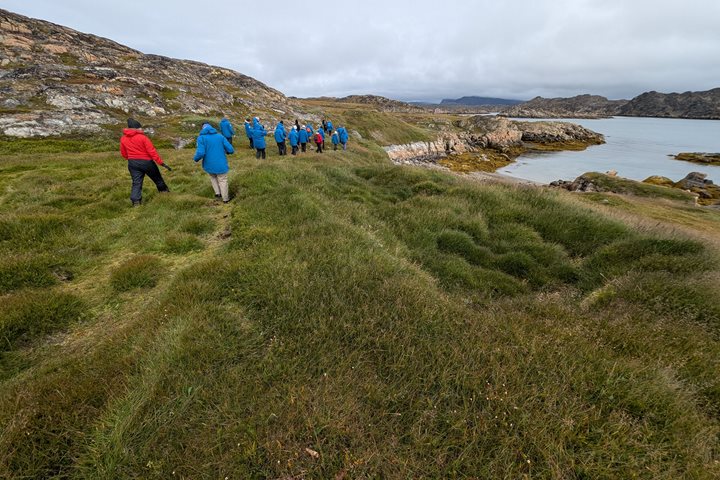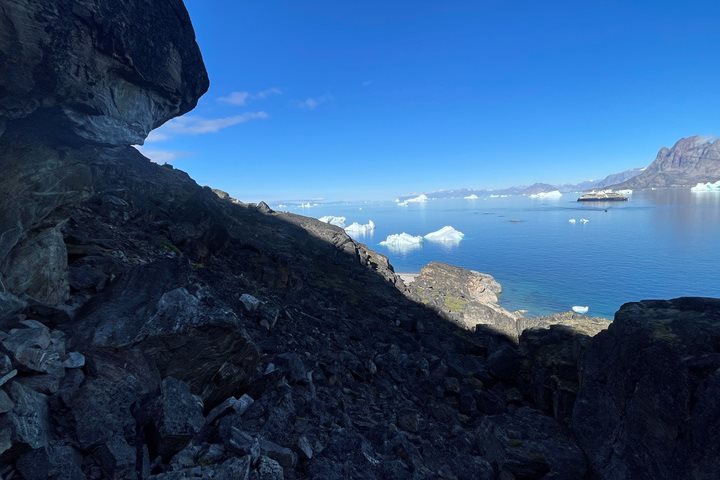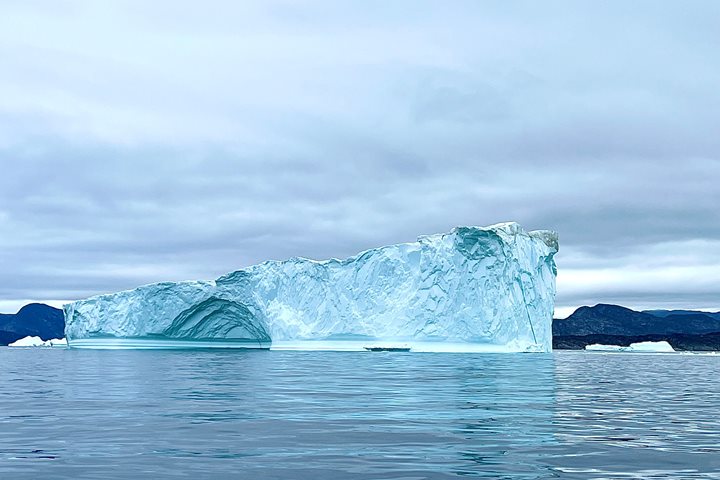At about 6:00 a.m., National Geographic Explorer cruises past the mouth of Ilulissat Icefjord, north of the Arctic Circle. The entrance, or terminus, is an icy wall, a couple hundred feet tall in places. The fjord is almost straight. It was not made by any valley glacier twisting and turning like a frozen river. This fjord was made by a mighty arm of the Greenland Icecap that punched its way through mountains and valleys from Greenland’s interior to the sea. We dock in Ilulissat. It is a pretty town, but our day is built around Ilulissat Icefjord, a UNESCO World Heritage Site. The iceberg parent is Sermeq Kujalleq (formerly Jakobshavn Glacier), the most active glacier in the world, north of Antarctica. Today, we explore the icefjord from the land and the sea.
8/21/2024
Read
National Geographic Endurance
Sydbay, Greenland
On our last expedition landing of the voyage, guests had the chance to visit Sydbay, the former site of the community of Sisimiut. Here we were able to see how this island has been continually inhabited since time immemorial. We viewed the remains of early Dorset housing, Thule tent rings, and sod houses standing alongside a modern Inuit seasonal fishing and harvesting cabin. It was not difficult to see what attracted people to this location for such a long time, as the landscape and seascape teams with a bounty of natural resources and traditional foods. Throughout our journey across Kalaallit Nunaat (the Indigenous name for Greenland) we were able to see the seasons begin to change. Even though we are just barely entering into late August, hints of autumnal colors, from browns and golds, to vibrant reds and majestic deep purples began to spread across the tundra. The beauty of the season made the island’s inhabitants, a colony of snow-white Arctic hares, stand out against the autumnal backdrop and black lichen covered rocks. A fine mist carried by ocean winds transformed this vibrant landscape into dreamy, muted colors that will stick with our guests long after our voyage is over.







